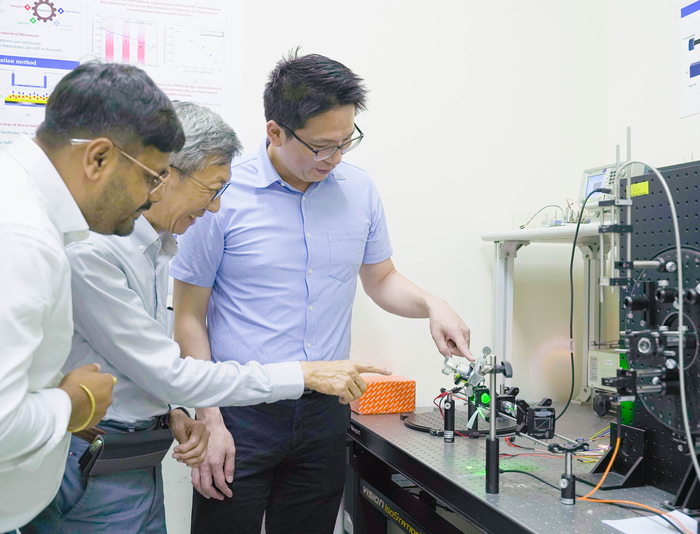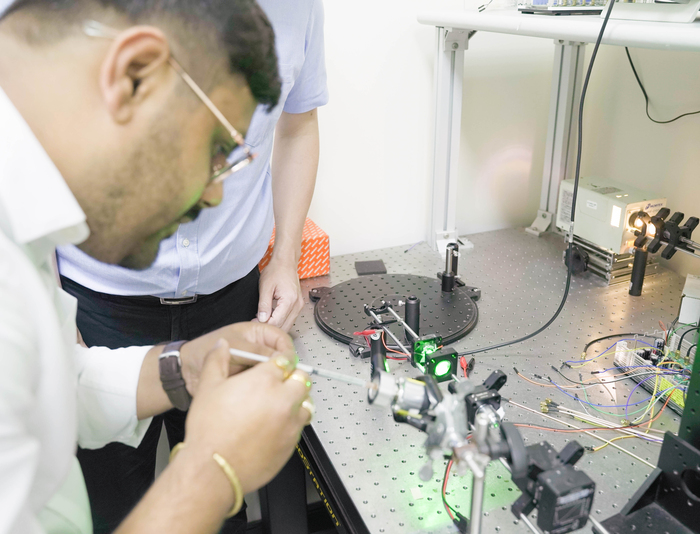Practicing Public Administration: National Chung Cheng University Implements Global Vision and Local Care




In Taiwan, around 160,000 people contract sepsis annually. Despite advancements in medicine, sepsis patients still face the challenge of quickly and accurately diagnosing the infection source in the early stages, often relying on doctors’ experience for diagnosis. Professor Guo-En Chang from the Department of Mechanical Engineering at CCU and Professor Chau Lai-Kwan from the Department of Chemistry and Biochemistry have developed a “Rapid and Sensitive On-site Detection Platform.” This biosensor uses innovative gold nanoparticles and optical waveguide biochip technology, requiring only a drop of blood to deliver results. The sensor’s sensitivity has set a new world record, reducing detection time from 15 minutes to 8 minutes, enabling faster and more accurate sepsis diagnosis and aiding in early detection and treatment. Sepsis is one of the leading causes of death in Taiwan, caused by systemic inflammatory responses to bacteria, viruses, and other pathogens. If not treated promptly, it can lead to septic shock with a high mortality rate. Professor Chang mentioned that the golden window for treating sepsis is within six hours from infection onset to appropriate treatment; exceeding this period reduces the patient’s survival rate to below 50%. He emphasized, “In the early stages of the disease, rapid and accurate testing methods are crucial, as they assist doctors in administering effective medications and treatments.” Currently, sepsis testing in clinical settings largely relies on ELISA technology, which requires professional medical laboratory personnel and large-scale equipment, taking about 8 to 12 hours to complete. Detecting various sepsis biomarkers is extremely challenging, adding to the difficulty of rapid screening. Professor Chang stated, “This new biosensor has improved sensitivity by over 1000 times.” The technology developed by the CCU team can detect procalcitonin biomarkers with a detection limit of 0.871 fg/mL in a very short time, breaking through current sepsis testing limitations. In addition to faster speed, the cost of the protein biomedical detection chip for the optical microfluidic sepsis rapid screening platform is less than one dollar, with the rapid detection system comprising compact, low-cost optical components. Professor Chang explained that future sepsis screening will no longer require bulky, expensive testing equipment. The new device is as small as a printer, portable, and mass-producible. Once widely available, it can be placed in health centers and public areas, allowing for convenient and quick screening without the need for large hospitals, significantly reducing the treatment and testing costs for sepsis patients. This newly developed protein biomedical detection chip can also be applied to other diseases, such as stroke and Alzheimer’s disease, making a substantial contribution to global human health and well-being. The current results have been published in the American Chemical Society’s journal Nano Letters and were featured on the cover. This journal is a leading and highly influential publication in the field of nanotechnology, with an impact factor consistently above 10. Only a few papers from Taiwan are published in this journal annually, making the publication and cover feature of CCU’s research a significant achievement.

